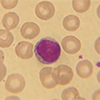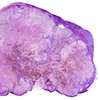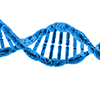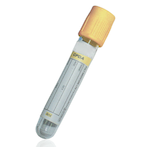Creatinine
Specimen Volume
5 mL vacutainerSample Preparation
Centrifuge
Turnaround Time
1 daySample Processing In Laboratory
Usual
Sample Stability
Samples are stable for seven days when stored at 4 ºC, or can be stored at -20 ºC for up to 3 months.
General Information
Serum creatinine measurement is used in the assessment of acute kidney injury and chronic kidney disease. The wide reference interval for [creatinine] and its being inversely correlated to glomerular filtration rate (GFR) results in its being an insensitive test for detecting early or relatively mild renal impairment. GFR may fall to half of normal before serum [creatinine] exceeds the upper reference limit. It is not useful as a screening test for early renal impairment e.g. in patients with diabetes, for which the detection of microalbuminuria is the recommended investigation. Furthermore, older individuals can have creatinine concentrations within the conventional population reference range while having significant renal impairment. This is due to the fall in [creatinine] with age secondary to the loss of muscle mass, and the lack of age-specific reference intervals. [Creatinine] may be influenced by muscle bulk and, to a much lesser extent, dietary protein intake, such that a (slightly) elevated [creatinine] may not indicate impaired renal function.
Patient Preparation
Patients should be advised not to eat meat for at least 12 hours before the eGFR blood test.
Notes
Creatinine is a waste product from the normal breakdown of creatine phosphate in muscle tissue, and is filtered through the kidneys, and excreted in urine. Creatinine production is continuous and is proportional to muscle mass. Circulating concentration will relate to the muscle mass of the individual, the volume of distribution of the creatinine, and the rate of filtration through the kidneys (glomerular filtration rate - GFR). It follows that concentrations will be higher in men than women who have the same GFR as males have a larger muscle mass. It also follows that some ethnic groups will have higher or lower creatines depending on the average muscle mass within the population.
The amount of blood the kidneys can make creatinine-free each minute is called the creatinine clearance, and is a good estimation of the GFR. As renal function declines, creatinine concentrations increase due to its reduced clearance by the kidneys, and the creatinine clearance and GFR goes down. Serum [creatinine] can be combined with measurements of urine creatinine in timed urine specimens to generate the creatinine clearance, an indicator of the glomerular filtration rate (GFR). Such measurements have poor reproducibility owing to the imprecision imposed by the difficulty in collecting accurately timed urine specimens. Serum [creatinine] can be used together with demographic information (e.g. age, race, sex) to calculate an estimated GFR (eGFR). In the UK, it is recommended that eGFR should be based on the MDRD (Modification of Diet in Renal Disease) 4-variable formula. The MDRD formula is not applicable to several clinical situations e.g. acute kidney disease, children, individuals with muscle-wasting etc. Alternate formulae are available for children. Estimation of GFR by formula is now recommended by the Department of Health in support of the Renal National Service Frame work.
Reference Range
Adult Male: 64-104 µmol/L
Adult Female: 49 - 90 µmol/L
Source of Reference Range
Manufacturer's kit insert (Abbott Alinity)Specifications
-
EQA Status:
NEQAS
- EQAS Scheme: Yes








